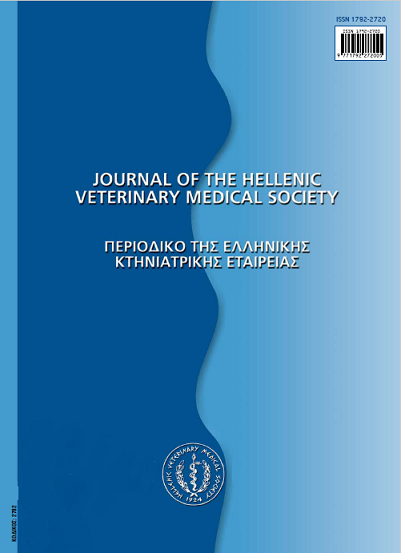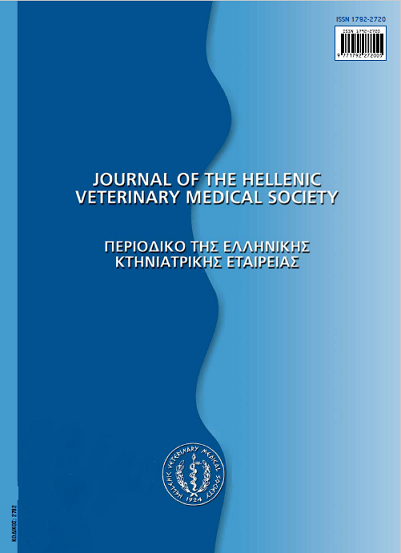Canine cutaneous papilloma. Study of seven cases.
Аннотация
Seven cases of canine papilloma were studied histopathologically using light and electron microscopy. Papillomavirus was detected immunohistochemically and by the polymerase chain reaction (PCR) method. The classical squamous papilloma was found in four dogs (#1,2,3,4), the inverted papilloma in one dog (#5) and the fibropapilloma in two dogs (#6,7).
Virus particles were detected electromicroscopically in two cases (#1,2). Immunohistochemistry, revealed the presence of the papillomavirus antigen in three cases (#1,2,3). The PCR method resulted in positive for COPV in two cases (#1,2). These results support the view that except for the canine oral papillomavirus, there might be other types of
papillomavirus that induce papilloma in dogs.
Article Details
- Как цитировать
-
KALDRYMIDOU (Ε. ΚΑΛΔΡΥΜΙΔΟΥ) E., PAPAIOANNOU (Ν. ΠΑΠΑΪΩΑΝΝΟΥ) N., POUTACHIDIS (Θ. ΠΟΥΤΑΧΙΔΗΣ) T., van GARDENER, E., & KARAYANNOPOULOU (Μ. ΚΑΡΑΠΑΝΝΟΠΟΥΛΟΥ) M. (2018). Canine cutaneous papilloma. Study of seven cases. Journal of the Hellenic Veterinary Medical Society, 52(2), 126–134. https://doi.org/10.12681/jhvms.15416
- Выпуск
- Том 52 № 2 (2001)
- Раздел
- Case Report

Это произведение доступно по лицензии Creative Commons «Attribution-NonCommercial» («Атрибуция — Некоммерческое использование») 4.0 Всемирная.
Authors who publish with this journal agree to the following terms:
· Authors retain copyright and grant the journal right of first publication with the work simultaneously licensed under a Creative Commons Attribution Non-Commercial License that allows others to share the work with an acknowledgement of the work's authorship and initial publication in this journal.
· Authors are able to enter into separate, additional contractual arrangements for the non-exclusive distribution of the journal's published version of the work (e.g. post it to an institutional repository or publish it in a book), with an acknowledgement of its initial publication in this journal.
· Authors are permitted and encouraged to post their work online (preferably in institutional repositories or on their website) prior to and during the submission process, as it can lead to productive exchanges, as well as earlier and greater citation of published work.












